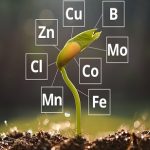Global Hydrogen Buses Market
As stated in our extensive report; the Global Hydrogen Buses Market accounted for USD 7.8 Billion in 2022 and is forecast to reach USD 49.2 Billion by 2030 at a CAGR of 30.1%.
Increasing investment in environment-friendly and energy-efficient projects due to the surging level of air pollution has fueled the development of hydrogen fuel cell buses currently used for travel and commercial purposes. These buses travel in inter-city and intra-city traffic and have many environmental benefits because they are free from pollution and emissions, are energy-efficient, and have a fast fuel system. It also reduces dependence on oil and offers more safety than diesel buses. In addition, these buses have more driver and passenger comfort systems and a smooth driving experience. Hydrogen-Electric buses use Hydrogen Buses and air to generate electricity to power the buses. The only wastewater from the bus is water, so buses are a more environmentally friendly means of transportation.
Click To Get a Free Sample On the Research Study

In comparison, one long-distance diesel bus produces 100 tons of CO2 emissions per year, and there are more than a million such buses in India, which harms the environment. Air quality is closely related to the Earth’s climate and ecosystems worldwide. WHO data shows that nearly the entire world’s population (99%) breathes air that exceeds and contains high levels of pollutants, with low- and middle-income countries suffering the most from exposure. In addition, almost 99% of the world’s population is exposed to levels of air pollution that increase the risk of many diseases, including stroke, heart disease, chronic obstructive pulmonary disease, cancer, and pneumonia. Considering these problems, the government is working on Hydrogen -based vehicles.
Factors Influencing Global Hydrogen Buses Market Growth
The growth of the global Hydrogen Buses market can be attributable to the following:
- The growing demand for eco-friendly, energy-efficient, emission-free vehicles that offer a quick refueling system drives the market growth.
- Growing concern about increasing air pollution is increasing the demand for environmentally friendly alternative public transport such as Hydrogen fuel cell buses.
- Accelerating the deployment of green Hydrogen to decarbonize emissions in many industries, including heavy industries, will also increase the use of Hydrogen Buses.
- Growing initiatives by government agencies to promote vehicles that reduce oil dependency and improve safety are increasing the demand for Hydrogen Buses.
- Growing intrigue and demand for a smooth travel experience that Hydrogen fuel cell buses offer. These buses have additional comfort systems for drivers and passengers.
Asia Pacific Region to Take Over the Market
Asia Pacific (India, China, Japan, Malaysia, Singapore, and the Rest of Asia Pacific) is expected to be the fastest-growing segment in the Hydrogen Buses market during the forecast period due to the rapidly growing population and increasing demand for trainers, and a rapidly growing production volume. In addition, for the first time in Korea, environmentally friendly Hydrogen electric buses, which can reduce pollution and fine dust, are operating as regular public transportation buses in Korea.
Conclusion
The overall Hydrogen Buses market sales have been favorably impacted by rising investment in environment-friendly and energy-efficient projects. Also, the surging level of air pollution has fueled the development of Hydrogen fuel cell buses currently used for travel and commercial purposes, infrastructural investment, and population density.
The well-known players of the Global Hydrogen Buses Market include Tata Motors Limited (India), Thor Industries (U.S.), Hyundai (South Korea), Ballard Power Systems (Canada), Nova Bus Corporation (Canada), New Flyer Industries Ltd (Canada), Evo Bus (Germany) and others.
![[Market Research Reports] – Research Google News Blog | VMR.Biz](https://www.vmr.biz/wp-content/uploads/2022/12/logo-removebg-preview.png)











